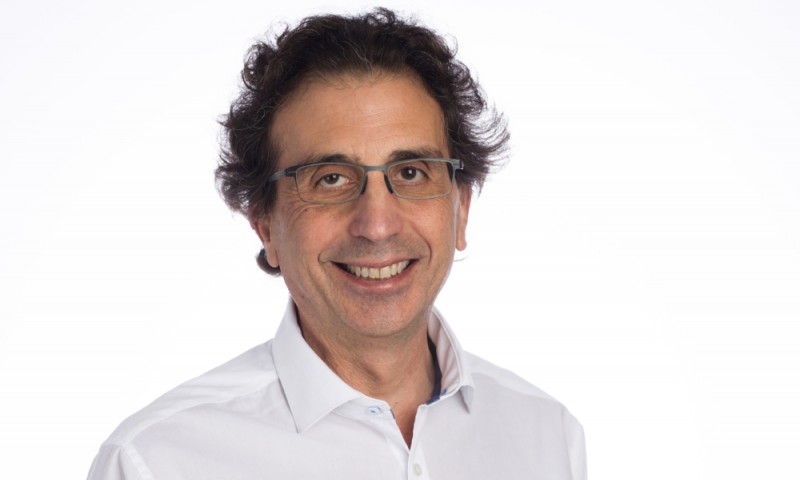Confirmed Speakers
Our invited and confirmed speakers are experts from academia and industry based around the globe, bringing together a multitude of ideas and the latest information.
Plenary Speakers

Prof. Martin Green
- Martin Green is Scientia Professor at the University of New South Wales, Sydney and Director of the Australian Centre for Advanced Photovoltaics, involving several other Australian Universities and research groups. His group’s contributions to photovoltaics are well known and include holding the record for silicon solar cell efficiency for 30 of the last 37 years, described as one of the “Top Ten” Milestones in the history of solar photovoltaics. The PERC solar cell that he invented in 1983 and his team developed to its full potential accounted for an estimated 85% of worldwide solar module production in 2020. Major international awards include the 1999 Australia Prize, the 2002 Right Livelihood Award, also known as the Alternative Nobel Prize, the 2007 SolarWorld Einstein Award, the 2016 Ian Wark Medal from the Australian Academy of Science and the prestigious Global Energy Prize in 2018.
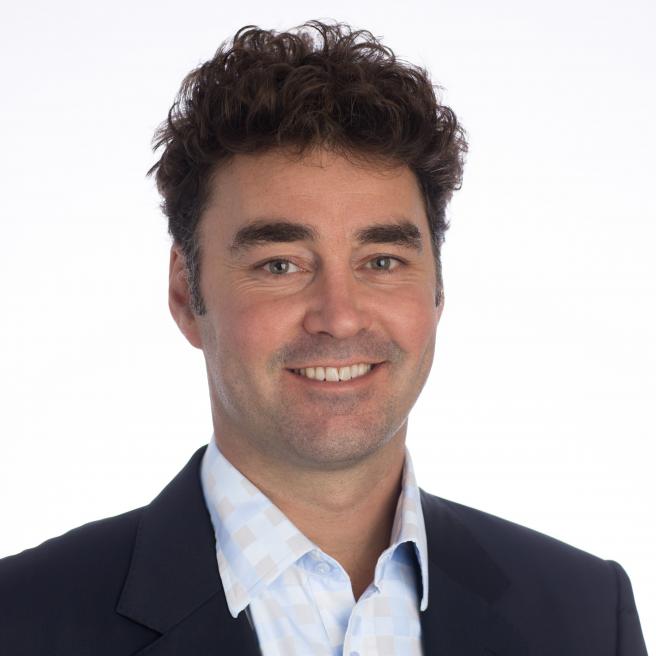
Prof. Henry Snaith
- Henry Snaith is the Binks Professor of Renewable Energy. His research focuses on developing and understanding new materials and device concepts for photovoltaic solar energy conversion. His research group work with organic, metal oxide and metal halide perovskite semiconductors, processed via solution or vapour phase deposition methods. His inter-disciplinary work ranges from new material synthesis and discovery, device fabrication and development, advanced characterisation methodologies and theoretical modelling. His election as a Fellow of the Royal Society (FRS) credits his discovery of the use of perovskites in efficient solar cells, which has started a new field of research gaining both academic and industrial following. Beyond his academic appointment, Henry Snaith is also a co-founder and CSO of two spin-out companies, Oxford PV Ltd and Helio Display Materials Ltd. commercialising metal halide perovskites for PV and light emitting applications respectively.
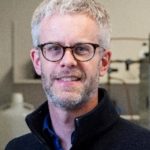
Prof. Michael D. McGehee
- Mike McGehee is a Professor in the Chemical and Biological Engineering Department at the University of Colorado Boulder. He is the Associate Director of the Materials Science and Engineering Program and has a joint appointment at the National Renewable Energy Lab. He is a cofounder and the Chief Scientist of Tynt Technologies, a company that is commercializing dynamic windows based on reversible metal electrodeposition. He is an advisor to Swift Solar, which was cofounded by former members of his research group. He was a professor in the Materials Science and Engineering Department at Stanford University for 18 years and a Senior Fellow of the Precourt Institute for Energy. His group makes materials and devices, performs a wide variety of characterization techniques, models devices and assesses long-term stability. He received his undergraduate degree in physics from Princeton University and his PhD degree in Materials Science from the University of California at Santa Barbara.

Prof. Christophe Ballif
- Prof. Christophe Ballif is director of the Photovoltaics and Thin-Film Electronics Laboratory @ EPFL and of the Sustainable Energy Center @CSEM and, which specializes in research and technology transfer along the value chain of photovoltaics and energy systems. With his teams, he has contributed to numerous innovations, products and start-up in the field of photovoltaics and energy (PV) and collaborates with close to 40 companies in Switzerland and worldwide. His current research and industrialization interests include materials and manufacturing processes for PV, high-efficiency crystalline and tandem perovskite/silicon solar cells, module technology and reliability, specialty PV products for building integration or mobility, as well as all aspects linked to storage and management of energy systems. He is (co-) author of more than 600 scientific papers and of numerous patents. In 2016, he received the Becquerel award for his contribution to the field of Photovoltaics and he is an elected member of the Swiss Academy of Engineering Sciences.
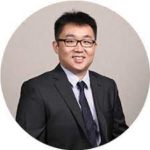
Dr. Buyi Yan
- Dr Buyi Yan is co-founder and Vice President of Microquanta, following his studies at Zhejiang University and University of New South Wales. In 2018 he was acknowledged in the Forbes Asia and Forbes China 30 under 30.
Keynote Speakers
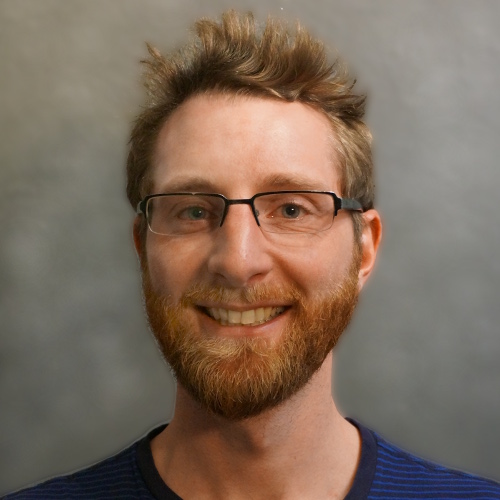
Dr. Giles Eperon
- Giles is the Chief Scientific Officer and a co-founder of Swift Solar, a US-based start-up commercializing perovskite solar. Giles has been working on perovskite solar for ~10 years, since his PhD at the University of Oxford (2012-2015). Since then he has been a Marie Curie Fellow at the University of Washington, and most recently a Staff Scientist at the National Renewable Energy Laboratory (CO, USA). Giles’ work has been published in over 80 articles, and Giles was named a 2016 Forbes ’30 under 30’ fellow in Energy and one of Clarivate’s Highly Cited Researchers.

Prof. Kylie Catchpole
- Kylie Catchpole is Professor in the School of Engineering at the Australian National University. She has research interests in solar cells and solar fuels as well as the broader energy transition. Her group has achieved leading efficiencies for perovskite and perovskite/silicon tandem solar cells, and their work on direct solar-to-hydrogen generation was listed as one of the top 10 innovations by the Innovation for a Cool Earth Forum (ICEF) in 2020. She was awarded the inaugural John Booker Medal for Engineering Science from the Australian Academy of Science.
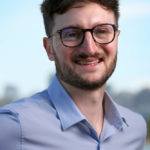
Dr. Luke Marshall
- Dr. Luke Marshall is the Chief R&D Officer at Sun Cable, having assisted with early engineering work since 2018. Luke recently completed his PhD at the UNSW School of Photovoltaic and Renewable Energy Engineering. Luke has previously worked in R&D across a range of fintech and energy projects.
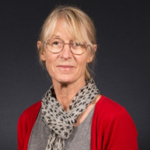
Prof. Alison Lennon
- Alison Lennon is Chief Scientist at Australian silicon photovoltaics start-up, Sundrive Solar and a Professor at the School of Photovoltaic and Renewable Energy Engineering at UNSW Sydney, Australia. Her research interests include silicon solar cell metallisation and interconnection and optical and thermomechanical modelling for photovoltaic modules. Since 2010, she has held collaborative research projects at UNSW in this field of research with Suntech Power, Trina Solar and LONGi Solar. Prior to joining UNSW, she was employed as a Research Scientist for Canon.
Invited Speakers

Dr. Sam Stranks
- Sam Stranks is an Assistant Professor in Energy at the University of Cambridge. He leads a research group focusing on emerging semiconductors for low-cost electronics applications including solar cells, lighting, and detectors. He obtained his DPhil (PhD) from the University of Oxford as a Rhodes Scholar in 2012 and was a Marie Curie Fellow at MIT 2014-2016 before starting his group in Cambridge in 2017. Sam received the 2018 Henry Moseley Award and Medal from the Institute of Physics, the 2019 Marlow Award from the Royal Society of Chemistry, the 2021 IEEE Stuart Wenham Award, the 2021 Philip Leverhulme Prize in Physics and the 2021 EES Lectureship. Sam is also a co-founder of Swift Solar, a start-up developing lightweight perovskite PV panels, and the non-profit Sustain/Ed, developing climate-focused teaching modules for school children. He was listed by the MIT Technology Review as one of the 35 under 35 innovators in Europe.

Dr. Veronica Bermudez
- Dr. Verónica Bermúdez is a Senior Research Director at QEERI (Qatar Environment Research Institute) where she is the Director of the Energy Center and leads the efforts in research, technology development and innovation in Energy. Prior to joining the organization in 2018, she was Acting General Manager of the Technology Division of the Atsugi Research Center at Solar Frontier KK in Japan. She has also hold a position of Principal Scientist at EDF R&D, Senior Scientist at NEXCIS (start-up) and Head of the Optoelectronic Characterization Laboratory at IRDEP (EDF) in France, between others. She is in the Advisory Board of a number of entities and have been strongly involved with reliability and degradations mechanisms in large power plants with top class PV power plant developers. Verónica has a PhD in Physics from the Universidad Autónoma de Madrid (Spain), and holds a number of international awards for her research activity. She is an Associate Editor in Journal of Renewable and Sustainable Energy and acts as independent expert for a number of international funding agencies as the European Commission, and European National funding bodies. She is also the author or co-author of more than 120 scientific papers in renown journals, including Nature, Nature Energy and Science, has deliver a large number of invited and keynote talks in several international conferences, as well as has a relevant patent portfolio. She has extensive experience in laboratory to industry research and technology transfer in the field of Renewable Energy and in particular for solar PV, in almost the whole value chain, from materials development to grid integration for generation, storage and energy management solutions.
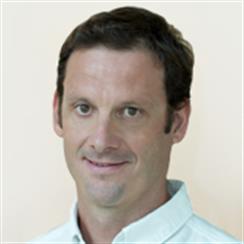
Dr. Stefaan de Wolf
- Stefaan De Wolf’s expertise lies in the science and technology of photovoltaics for terrestrial applications. His research focuses on the fabrication of high-efficiency silicon-based solar cells, with specific attention to the fundamental understanding of interface structures and electrical contact formation, relevant to solar cells and electronic devices. He is also interested in new device architectures and applications, such as photovoltaics for hot climates and silicon-based multi-junction solar cells, aimed at the improved utilization of the full solar spectrum for electricity generation. A prime example of these devices are perovskite-silicon tandem solar cells.
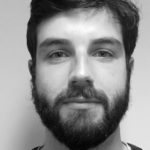
Dr. Anthony Chesman
- Dr Chesman is a Principal Research Scientist and Group Leader of the Renewable Energy Systems (RES) Group in CSIRO Manufacturing. After completing his PhD in inorganic chemistry and crystallography at Monash University, Dr Chesman joined CSIRO in 2011 as a OCE Postdoctoral Fellow studying the scalable synthesis of nanoparticles for solution-processed solar cells. Dr Chesman has since studied the optical characterisation of thin film solar cells, perovskite crystal growth, and nanostructured photonic surfaces for photocatalysis, and is currently developing quantum NV diamond systems for NMR-like applications.
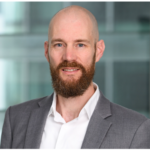
Thomas Studer
- Thomas is the energy transition lead for the Technology and Innovation team within Macquarie Asset Management. He focuses on technologies in the energy and mobility sector essential to decarbonizing the economy. He provides thought leadership in the domain and works closely with deal teams in assessing the outlook and potential of investments with exposure to the energy transition as well as supporting asset managers on future readying assets. Thomas has 15 years’ experience in the energy transition, joining Macquarie in 2018 from Saudi Aramco’s renewable energy department, where he contributed to the launch of the national Saudi renewable energy program and provided thought leadership in the Emerging Technologies and Market Intelligence division. In his earlier career, Thomas entered the solar industry as a development engineer for flexible, thin-film solar cells, from where he moved on to managing the ramp-up and process integration of turnkey solar factories. He served 3 years as the chief engineer of a solar factory in Spain. Thomas has a Master of Science in Materials Science and Engineering from Ecole Polytechnique Fédérale de Lausanne (EPFL).

Prof. Klaus Weber
- Dr Klaus Weber is Professor in the Research School of Engineering at the ANU. His current research interests are focused on perovskite photovoltaics, specifically for application to high efficiency tandem cells. He co-invented and developed several thin film cell technologies including SLIVER technology, for which he was closely involved in the commercial development including the current ARENA project (formerly with Transform Solar). He has authored over over 140 publications. He is a recipient of the Weeks Award by the International Solar Energy Society and the Alan Walsh Medal for Service to Industry by the Australian Institute of Physics. His work on SLIVER technology received numerous other awards including the Banksia Award and the Aichi World Expo Global Eco-Tech 100 award.
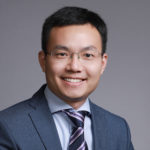
Prof. Hairen Tan
- Dr. Hairen Tan is a full professor in College of Engineering and Applied Sciences at Nanjing University (NJU). He received the B.Sc. and M.Sc. degrees from Central South University and Institute of Semiconductors, Chinese Academy of Sciences in 2008 and 2011, respectively. He obtained the Ph.D. degree with cum laude in 2015 from Delft University of Technology. After graduation he was awarded the Rubicon Fellowship from NWO and joined Ted Sargent’s group at University of Toronto as a postdoctoral fellow during 2015-2018. He joined NJU in March 2018 after receiving the National 1000 Young Talents award in China. His works have been published in Science, Nature Energy, Nature Communications, Advanced Materials, Progress in Photovoltaics, with total citation over 10,000 times. His current research focuses on developing high-efficiency and cost-effective photovoltaics devices, including perovskite solar cells, silicon solar cells, and perovskite-based tandem solar cells. Dr. Tan serves as the external editor of Communications Materials and Editorial Board Member of Journal of Semiconductors and Science China Materials.
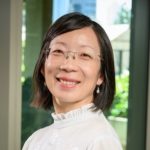
Prof. Hongxia Wang
- Prof. Hongxia Wang received her PhD in 2005 at Institute of Physics, Chinese Academy of Science. After that, she undertook a two-year industry project at Dyesol Australia before rejoining academic research at University of Bath, UK as a postdoc in 2007. She returned to Australia in 2010 to establish her solar cell research team at Queensland University of Technology. Her research has been primarily focusing on development of new routes to enhance performance and stability of 3rd generation solar cells and energy storage devices, in particular sensitized solar cells and perovskite solar cells. She has published over 180 peer-reviewed scientific articles and two book chapters to date. She was also an inventor of four patents in the area of energy materials. She was recipient of “Solar Energy Journal Best Paper Award for 2016 in the topic of Photovoltaics” by International Solar Energy Society. She was awarded several prestigious fellowships including “Australian Research Council (ARC) Future Fellowship”, “ARC Postdoctoral Fellowship (Industry, APDI)” and QUT’s “ Vice-Chancellor’s Performance Award for Best Research with Real World Impact” in 2015 and 2017 respectively.
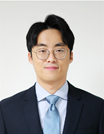
Dr. Jincheol Kim
- Jincheol Kim is currently a research fellow in Macquarie University. He received his B.S. and M.S. in materials science and engineering from Seoul National University, Korea in 2008 and 2011, respectively. He received his PhD degree on perovskite solar cells in University of New South Wales in 2018. He worked as a senior researcher in Korea Electronics Technology Institute at Republic of Korea between 2019-2022. His research interests focus on the development of high-performance tandem perovskite solar cell with long-term stability and novel integration method between energy harvesting and storage system.
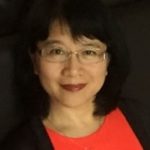
Dr. Mei Gao
- Dr Mei Gao is a Principal Research Scientist and the Team Leader of the Printable Photovoltaics Team at CSIRO Manufacturing. She received her B.S. from Beijing University in 1987 and PhD from the University of Wollongong, Australia in 2003. Dr Gao spent three years as a visiting scholar at the University of Antwerp, Belgium before joining CSIRO in 1995. Her focus over the last decade has focused on the development of low cost, lightweight, organic and perovskite solar cells for achieving facile, solution processible, reproducible and roll-to-roll printable high-performance solar devices. She received CSIRO Medal for Research Achievement for her contribution to the successful commercialization of the research in 2009.
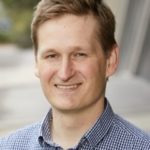
Prof. Jacek J. Jasieniak
- Professor Jacek Jasieniak completed a Bachelor of Science (1st Class Honours) from Flinders University (2003, University Medal) and PhD from the University of Melbourne (2008, Chancellor’s Prize). He then undertook a postdoctoral work at the Commonwealth Scientific and Industrial Research Organisation (CSIRO), and was a Fulbright Fellow at the University of California Santa Barbara (2011-12). In 2012 he returned to CSIRO, progressing to a Senior Research Scientist and then Group Leader. In 2015 he moved to Monash University to join the Faculty of Engineering, and has since held senior roles as the Director of the cross-disciplinary Monash Energy Institute, Associate Dean of Research for the Faculty of Engineering and is currently the Pro Vice-Chancellor (Research Infrastructure). His research is focussed on developing new materials for a variety of new energy technologies, in particular focussing on emerging photovoltaics.
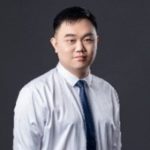
Prof. Wei Li
- Dr. Wei Li is currently a full professor at State Key Laboratory of Advanced Technology for Materials Synthesis and Processing, Wuhan University of Technology. He received his Bachelor and Master’s degree from the Department of Materials Science and Engineering, Wuhan University of Technology in 2006 and 2009, respectively. In 2013, he obtained his Ph.D. from the School of Photovoltaic and Renewable Energy Engineering, The University of New South Wales under the supervision of Prof. Martin Green. From 2015 to 2018, Dr. Li worked as a research fellow in Department of Chemical Engineering, Monash University under the supervision of Prof. Udo Bach and Prof. Yi-Bing Cheng.

Prof. Anita Ho-Baillie
- Anita Ho-Baillie is the John Hooke Chair of Nanoscience at the University of Sydney. She is also an Adjunct Professor at the School of Photovoltaics, University of New South Wales. She has a keen research interest on high performance solar cells and their applications. She is a highly cited researcher in 2019 – 2021 and has been named the Top Australian Researcher in the field of Sustainable Energy by the Australian Newspaper Annual Researcher Magazine. Her achievements include setting solar cell energy efficiency world records in various categories and reporting record durability for perovskite solar cells.

Paul Moonie
- Paul Moonie is the CEO of Greatcell Australia, a subsidiary of Greatcell Energy. He has been working on 3rd generation research and development for 22 years, with experience Dye-sensitised and Perovskite Solar Cells and catalysts for Hydrogen Fuel cells. He worked across a wide range of sectors including industry, government research and universities, including EPFL.
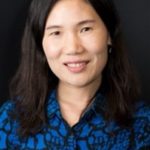
Prof. Xiaojing Hao
- Prof Xiaojing Hao obtained her PhD in the School of Photovoltaic and Renewable Energy Engineering of UNSW in 2010, and currently Professor, ARC Future Fellow at UNSW. Prof Hao has focused her research on low-cost, high-efficiency thin film and tandem solar cells for more than ten years, researching on earth-abundant compound semiconductor materials such as chalcogenides and perovskites for thin film and tandem solar cells and solar fuel applications. Prof Hao now leads a strong group in the above areas, achieving a number of efficiency records on emerging chalcogenide solar cells. Prof Hao has published >160 peer-reviewed journal articles. She was recipient of several awards, such as 2020 Prime Minister’s Prizes for Science: Malcolm McIntosh Prize for Physical Scientist of the Year, 2021 Australian Academy of Science Pawsey Medal.

Dr. Christopher Fell
- PhD physicist with 30 years experience in research, industry, academia and CSIRO, including photovoltaics (since 1998), photonics, thin films, surface science and ion beam technology. Founded CSIRO’s photovoltaics research program, now operating commercially as PV Performance Laboratory, the only accredited PV measurement facility in the Southern Hemisphere. Graduate of the Australian Institute of Company Directors. Chair, Australian Photovoltaics Institute. Conjoint Lecturer, University of Newcastle. Australia’s representative on the IEC international standards committee for photovoltaic modules.
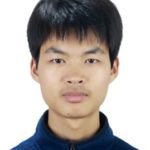
Assoc. Prof. Anyi Mei
- Anyi Mei is an associate professor in Wuhan National Laboratory for Optoelectronics (WNLO) at Huazhong University of Science and Technology (HUST). He received his B.E. in Materials Science and Engineering (2013) and Ph.D. in Optical Engineering (2018) from HUST. His research interests are focused on printable mesoscopic perovskite solar cells and related materials.

